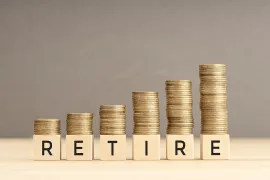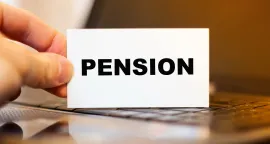Ontario man faces pre-retirement cash crunch while paying daughter's $72K grad-school tuition
But a government pension will ensure a secure, prosperous retirement

Ken’s concern is that he will run out of cash in retirement.
In Ontario, a man we’ll call Ken, 64, is a civil servant. His 22-year-old daughter, Rachel, lives with him while studying at grad school. Divorced not long ago, he has wound up paying Rachel’s educational expenses that run to $72,000 per year. He has a $1,250,000 house, $13,880 in his RRSP, $46,126 in his TFSA, $1,057 taxable savings and an $8,000 car. The house has a $178,946 mortgage. His net worth works out to $1,140,117. His employment pension will have to be the basis of his retirement income for his savings, $61,063, are modest.
Ken’s concern is that he will run out of cash in retirement. At present, as a mid-level manager, he earns $150,772 per year plus variable overtime. Taxes, benefits, union dues and pension fund costs cut that down to $9,715 per month. Rachel has three more years of school before graduation. That’s a $216,000 bill. He saves on food costs because meals are provided by his employer when he is on round-the-clock shifts.
Tuition bills
Ken’s cash crunch is made somewhat worse by the termination of some payments that his former partner used to make to Rachel. Ken has picked up the slack with little expectation of repayment. Rachel may be able in future to repay her dad, but getting established in her profession will take many years.Family Finance asked Derek Moran, head of Smarter Financial Planning Ltd. in Kelowna, B.C. to work with Ken. Moran believes debt management and cash-flow issues must be addressed.
Ken’s total monthly expenses add up to $9,715. About 62 per cent of that is Rachel’s $6,000 monthly tuition. His variable rate mortgage, currently 3.05 per cent, costs $1,308 per month. Ken can start receiving his Canada Pension Plan benefit in February 2023, though he will still be working at his government job.
Adding up income
The foundation for Ken’s retirement income will be his pension. In three years at his 68th birthday, he will have 31.9 years of service at two per cent of $150,773 or about $96,192 less a bridge of $14,326. That will leave him with $81,867. If he retires in January 2023 at 65, he would get less — $75,935 per year. Working longer and deferring the start of his pension produces an increase in his pension.Ken, who arrived in Canada at age 26, will be eligible for 39/40ths of full OAS of $8,004 per year, which works out to $7,804 per year. He can defer the start to age 71 and then get one retroactive year.
Ken has $46,126 in his TFSA. He adds nothing and keeps the account as a reserve just for emergencies. It is therefore not part of his spending. He has no RRSP room because the pension adjustment limits him to 18 per cent of earned income. That is already paid by his government pension contribution.
If the present RRSP balance of $13,880, grows at three per cent after inflation and is spent over 25 years to age 90, it would add $774 per year to his income for 25 years.
At 65, he would have his government pension of $75,935, RRSP income of $774, $15,043 from CPP and $7,804 in OAS for a total of $99,556. At that level, $2,670 would be clawed back, and after 23 per cent average tax, he would have $74,603 per year or about $6,200 per month.
If he works to age 68, he would have a work pension of $82,000, $18,804 enhanced CPP, RRSP of $875, enhanced OAS of $9,728 less a clawback of $4,445 for final income of $106,962. After 23 per cent tax, he would have $82,360 per year or $6,863 per month. Working three more years generates a take-home monthly income gain of $663 per month. Whether it’s worth it will be Ken’s personal decision.
Ken’s civil service pension is indexed to the rate of inflation. Working longer produces a higher base for indexation and thus a clear advantage to delayed retirement. The OAS clawback taxes the gain, but he will keep 85 per cent of every indexation adjustment before income tax. And he can exert some control over his ordinary income tax rate by selecting investments that offer capital gains taxed on the basis of a present inclusion rate of 50 per cent, that is, only half a realized gain is taxable.
Financial freedom
In three years, Rachel will be done with her advanced degree. Thus Ken’s personal disposable income will rise by the $72,000 per year he currently allocates to Rachel’s studies.The additional cash Ken can save when Rachel has finished her postgrad degree can accelerate payment of his mortgage which, at the present paydown rate of $1,308 per month, has 12 years to run. Were Ken to double the paydown rate to $2,616 per month, which he will be able to do in three years, the mortgage would be paid in full in four and a half years after he no longer subsidizes her studies. That’s assuming renewal rates do not rise drastically.
The greater cash flow Ken will have in three years when he no longer pays Rachel’s tuition, will also allow him to fill his TFSA space. His TFSA balance is $46,126. The present TFSA limit, $81,500, is growing at $6,000 per year. It will therefore be $99,500 in three years. When Rachel ends her studies, Ken will be able to add to the TFSA balance. He plans to keep the TFSA as an emergency reserve and thus not part of spending.
By his early 70s, Ken’s mortgage will be fully paid — assuming he has doubled his payments, Rachel will have her grad degree, and he will have a liberal budget for the travel he has foregone to help Rachel. He’ll have a secure, prosperous retirement, Moran predicts.
Retirement stars: 4 **** out of 5
Financial Post
( C) 2022 The Financial Post, Used by Permission

































